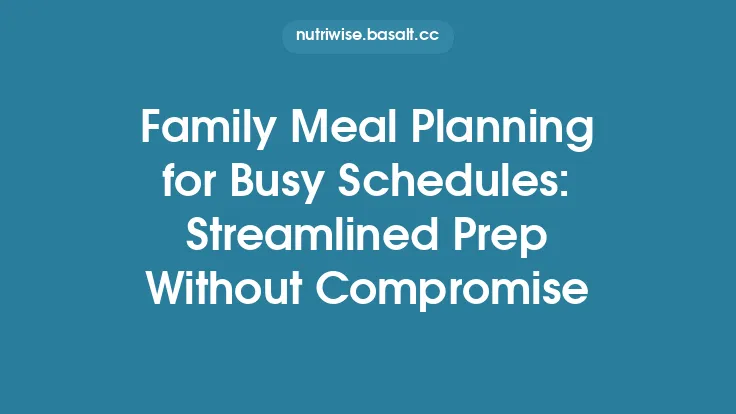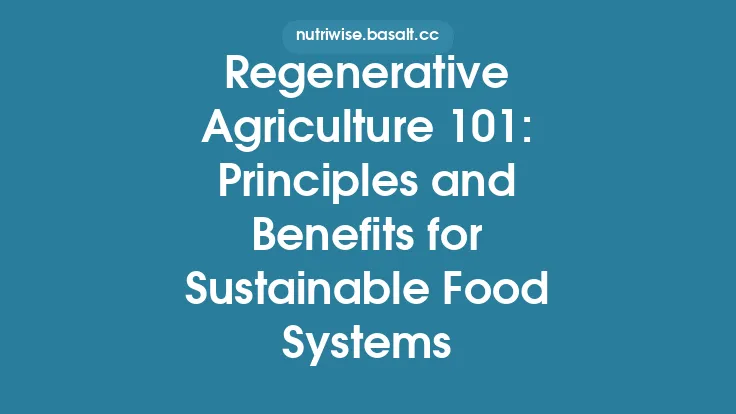Low‑cost lunches don’t have to be bland, boring, or nutritionally inadequate. With a little forethought and a handful of versatile ingredients, you can assemble meals that keep you energized through the afternoon, fit into a tight budget, and require only a few minutes of prep each morning. Below is a step‑by‑step guide that walks you through the economics of a lunch, the nutrition fundamentals you need to hit, and a toolbox of recipes and techniques that make quick, wholesome meals a reality for both the office and the classroom.
Understanding the Cost Components of a Lunch
Before you start counting pennies, it helps to know where the dollars (or cents) are actually going. A typical lunch cost can be broken down into three main categories:
| Component | What It Covers | Typical Impact on Cost |
|---|---|---|
| Base Carbohydrate | Rice, pasta, bread, tortillas, oats, quinoa | Often the cheapest bulk of the meal; a cup of cooked rice costs ≈ $0.15. |
| Protein Source | Canned beans, eggs, tofu, inexpensive cuts of meat, Greek yogurt | Proteins are usually the most expensive line item; a can of black beans ≈ $0.80, a large egg ≈ $0.15. |
| Add‑Ons & Flavor | Fresh or frozen vegetables, cheese, sauces, nuts, herbs | Can vary widely; a frozen mixed veg bag (1 lb) ≈ $1.20, a small block of cheddar ≈ $0.30 per serving. |
By tracking these three pillars, you can quickly see where you have room to trim or where you might need to invest a little more for nutritional balance.
Building a Nutrient‑Balanced Lunch on a Tight Budget
A truly satisfying lunch hits three macronutrient targets and supplies a range of micronutrients:
| Goal | Approximate Portion | Why It Matters |
|---|---|---|
| Complex Carbohydrate | ½ – 1 cup cooked (≈ 30‑45 g) | Provides steady glucose release, keeping energy levels stable. |
| Protein | ½ – 1 cup cooked beans, 1 large egg, or 3‑4 oz lean meat | Supports muscle maintenance and satiety. |
| Vegetables/Fruit | 1 cup raw or cooked (≈ 80‑100 g) | Supplies fiber, vitamins, and antioxidants. |
| Healthy Fat | 1 tsp oil, 1 tbsp nuts, or ¼ avocado | Enhances nutrient absorption and prolongs fullness. |
A simple formula to keep in mind is CARB : PROTEIN : VEG ≈ 2 : 1 : 1 by volume. For example, a lunch consisting of 1 cup cooked brown rice (carb), ½ cup black beans (protein), and 1 cup mixed veggies (veg) hits the balance nicely while staying under $2 per serving.
Pantry Staples That Keep Costs Low
These items have long shelf lives, are inexpensive per serving, and can be transformed into countless lunch variations:
| Item | Typical Cost (per serving) | Versatile Uses |
|---|---|---|
| White or Brown Rice | $0.15 | Bowls, stir‑fries, sushi‑style wraps. |
| Dried Lentils | $0.10 | Soups, salads, “meat‑less” patties. |
| Canned Chickpeas | $0.20 | Hummus, salads, roasted snack. |
| Rolled Oats | $0.05 | Overnight oats, oat‑based “crusts,” thickening sauces. |
| Whole‑Wheat Tortillas | $0.12 | Wraps, quesadillas, tortilla‑based “pizzas.” |
| Eggs | $0.15 (large) | Hard‑boiled, scrambled, egg‑salad. |
| Canned Tuna or Salmon | $0.70 | Tuna salad, protein boost for grain bowls. |
| Frozen Mixed Vegetables | $0.30 | Stir‑fries, microwave‑steamed sides, blended soups. |
| Plain Greek Yogurt | $0.40 | Dressings, parfaits, protein‑rich snack. |
| Soy Sauce, Mustard, Hot Sauce | $0.02 | Flavor enhancers that add depth without extra cost. |
Stocking these basics means you can assemble a lunch in minutes, even on days when fresh produce is limited.
Quick Assembly Techniques for Work and School
Speed is essential when you’re juggling a morning commute or a tight class schedule. Here are three proven methods that keep prep time under ten minutes:
- Mason‑Jar Layering
- Bottom: dressing or sauce (e.g., olive oil + lemon).
- Middle: dense ingredients (beans, cooked grains).
- Top: delicate veggies, leafy greens, herbs.
*Tip:* Shake the jar right before eating to distribute the dressing evenly.
- One‑Pan “Mix‑and‑Match” Bowls
- Cook a base (rice, quinoa) in a microwave‑safe bowl.
- Add a pre‑cooked protein (canned fish, boiled eggs).
- Toss in frozen veggies; microwave for 1‑2 min.
- Finish with a drizzle of sauce and a sprinkle of cheese or nuts.
- Cold‑Prep Wraps
- Spread a thin layer of hummus or Greek yogurt on a tortilla.
- Layer protein (sliced turkey, tofu strips), veggies, and a handful of greens.
- Roll tightly, slice in half, and wrap in parchment for easy transport.
All three methods rely on pre‑portioning ingredients the night before, which eliminates decision fatigue in the morning.
10 Ready‑to‑Make Low‑Cost Lunch Ideas
Below are ten recipes that each cost $1.50 – $2.20 per serving, require ≤ 10 minutes of assembly, and meet the nutrient balance outlined earlier. Nutritional values are approximate and based on standard serving sizes.
| # | Recipe | Core Ingredients (per serving) | Approx. Cost | Prep Time | Key Nutrients |
|---|---|---|---|---|---|
| 1 | Mediterranean Chickpea‑Rice Bowl | ½ cup cooked brown rice, ½ cup canned chickpeas, ¼ cup diced cucumber, ¼ cup cherry tomatoes, 1 tbsp feta, 1 tsp olive oil + lemon | $1.70 | 5 min (assemble) | 12 g protein, 45 g carbs, 6 g fat, vitamin C |
| 2 | Egg‑and‑Veggie Tortilla Wrap | 1 whole‑wheat tortilla, 2 hard‑boiled eggs (sliced), ¼ cup shredded carrots, ¼ cup spinach, 1 tbsp mustard | $1.55 | 7 min (slice eggs, roll) | 14 g protein, 30 g carbs, 8 g fat, iron |
| 3 | Tuna‑Quinoa Power Salad | ½ cup cooked quinoa, ½ can tuna (in water), ¼ cup frozen peas (thawed), 1 tbsp plain Greek yogurt, dash of soy sauce | $1.90 | 6 min (mix) | 20 g protein, 35 g carbs, 4 g fat, omega‑3 |
| 4 | Lentil‑Veggie Soup in a Thermos | ½ cup cooked lentils, ½ cup low‑sodium vegetable broth, ¼ cup diced carrots, ¼ cup diced potatoes, pinch of thyme | $1.45 | 8 min (heat broth, combine) | 13 g protein, 38 g carbs, 1 g fat, fiber |
| 5 | Greek Yogurt Parfait with Oats & Fruit | ¾ cup plain Greek yogurt, ¼ cup rolled oats, ½ cup frozen berries (defrosted), drizzle of honey | $1.60 | 4 min (layer) | 15 g protein, 40 g carbs, 3 g fat, calcium |
| 6 | Spicy Black‑Bean Burrito Bowl | ½ cup cooked white rice, ½ cup canned black beans, ¼ cup corn (frozen), 1 tbsp salsa, 1 tsp hot sauce | $1.55 | 5 min (assemble) | 12 g protein, 48 g carbs, 2 g fat, vitamin A |
| 7 | Tofu‑Stir‑Fry with Noodles | ½ cup cooked instant rice noodles, ½ cup cubed firm tofu (pre‑pressed), ¼ cup frozen stir‑fry veg, 1 tbsp soy sauce | $1.80 | 7 min (microwave tofu & veg, toss) | 11 g protein, 45 g carbs, 5 g fat, calcium |
| 8 | Peanut‑Butter Banana Wrap | 1 whole‑wheat tortilla, 1 tbsp peanut butter, ½ banana (sliced), sprinkle of chia seeds | $1.70 | 3 min (spread & roll) | 9 g protein, 38 g carbs, 9 g fat, potassium |
| 9 | Chicken‑Salad Lettuce Cups (using canned chicken) | ½ can chicken, 1 tbsp plain yogurt, ¼ cup diced celery, 2 large lettuce leaves, dash of pepper | $1.85 | 6 min (mix & fill) | 16 g protein, 4 g carbs, 5 g fat, vitamin K |
| 10 | Veggie‑Loaded Pasta Salad | ½ cup cooked whole‑grain pasta, ¼ cup canned diced tomatoes, ¼ cup frozen peas, 1 tbsp olive oil, basil | $1.65 | 8 min (mix, chill) | 8 g protein, 42 g carbs, 7 g fat, lycopene |
*Cost calculations are based on average U.S. grocery prices (2024) and assume bulk‑store pricing for pantry items.*
Smart Storage and Food Safety for Lunches
Even the most budget‑friendly lunch can become a waste of money if it spoils before you get to eat it. Follow these guidelines:
| Storage Tip | Why It Matters | Practical Application |
|---|---|---|
| Use airtight containers | Prevents moisture loss and bacterial ingress. | Choose BPA‑free plastic or glass jars with tight‑locking lids. |
| Cool foods quickly | Bacteria multiply rapidly between 40 °F–140 °F (the “danger zone”). | After cooking, spread food on a shallow tray to cool, then refrigerate within 2 hours. |
| Label with date | Helps you track freshness, especially for meals pre‑made for the week. | Write the prep date on a sticky note and attach to the container. |
| Keep dressings separate | Prevents soggy greens and extends shelf life. | Pack sauces in small squeeze bottles or condiment packets. |
| Reheat to 165 °F | Guarantees pathogen kill if you’re warming a protein. | Use a food thermometer or microwave for 1‑2 minutes, stirring halfway. |
A well‑organized lunchbox (or a set of reusable containers) can shave minutes off your morning routine and protect your investment in each meal.
Customizing Lunches for Dietary Preferences
You don’t have to sacrifice your dietary needs to stay within budget. Below are low‑cost swaps that keep the overall cost stable:
| Preference | Swap Example | Cost Impact |
|---|---|---|
| Vegetarian | Replace canned tuna with extra ½ cup black beans. | +$0.10 |
| Vegan | Swap feta for a sprinkle of nutritional yeast. | +$0.05 |
| Gluten‑Free | Use rice or corn tortillas instead of wheat. | +$0.08 |
| Dairy‑Free | Use a dollop of avocado or a drizzle of tahini instead of cheese. | +$0.12 |
| Low‑Sodium | Choose low‑sodium canned beans and make your own vinaigrette with vinegar and herbs. | -$0.05 |
These adjustments keep the macro balance intact while respecting personal health goals.
Tips for Reducing Waste Without Bulk Buying
Even if you’re not buying in massive quantities, waste can still erode your savings. Implement these micro‑habits:
- Portion‑Size Pre‑Portioning – Use a kitchen scale or measuring cups to allocate exact servings of rice, beans, or pasta. This prevents “extra” that ends up in the trash.
- Ingredient “Cross‑Use” – Cook a batch of quinoa on Sunday; use half for a lunch bowl on Monday and the remainder in a cold salad on Thursday.
- Freeze Single‑Portion Extras – Small portions of cooked lentils or beans freeze well. Thaw only what you need for the next day.
- Utilize “Ugly” Produce – Scrambled eggs with wilted spinach or a stir‑fry with slightly bruised carrots are still nutritious and often discounted.
- Repurpose Leftover Sauces – A leftover pesto can become a quick dressing for a new salad, extending its life and value.
Leveraging Free Resources and Community Options
Many workplaces and schools provide amenities that can further cut costs:
- Microwave & Hot Water Stations – Use them to reheat pre‑cooked grains or steam frozen veggies, eliminating the need for a personal hot plate.
- Refrigerator Access – Store perishable items like dairy or fresh salads safely for the day.
- Water Refill Stations – Skip buying bottled drinks; bring a reusable bottle and stay hydrated for free.
- Community Kitchen Hours – Some campuses have shared kitchen spaces where you can batch‑cook on weekends without needing a full‑time stove at home.
Taking advantage of these resources reduces the need for disposable heat packs or extra packaging, keeping both your wallet and the environment happier.
Quick Checklist for Planning Your Weekly Lunches
- [ ] List core pantry staples (rice, beans, oats, tortillas, eggs).
- [ ] Choose 3‑4 protein options (canned tuna, eggs, tofu, beans).
- [ ] Draft 5‑7 lunch combos using the CARB:PROTEIN:VEG ratio.
- [ ] Pre‑portion grains and proteins into reusable containers.
- [ ] Pack dressings separately in small squeeze bottles.
- [ ] Label each container with the date and main ingredients.
- [ ] Verify storage at work/school (refrigerator space, microwave access).
- [ ] Review the next day’s schedule for any time constraints that may require a no‑heat option.
Crossing off each item each week will streamline your routine, keep costs low, and ensure you never sacrifice nutrition for convenience.
By focusing on inexpensive pantry foundations, smart assembly methods, and a handful of versatile recipes, you can consistently enjoy lunches that are quick, tasty, and nutritionally sound—all without breaking the bank. The strategies above are timeless; they work whether you’re a college student, a busy professional, or a parent packing meals for a school‑age child. Start with one or two of the suggested recipes, refine the process to fit your schedule, and soon you’ll have a reliable, low‑cost lunch system that fuels your day and protects your wallet. Happy packing!





